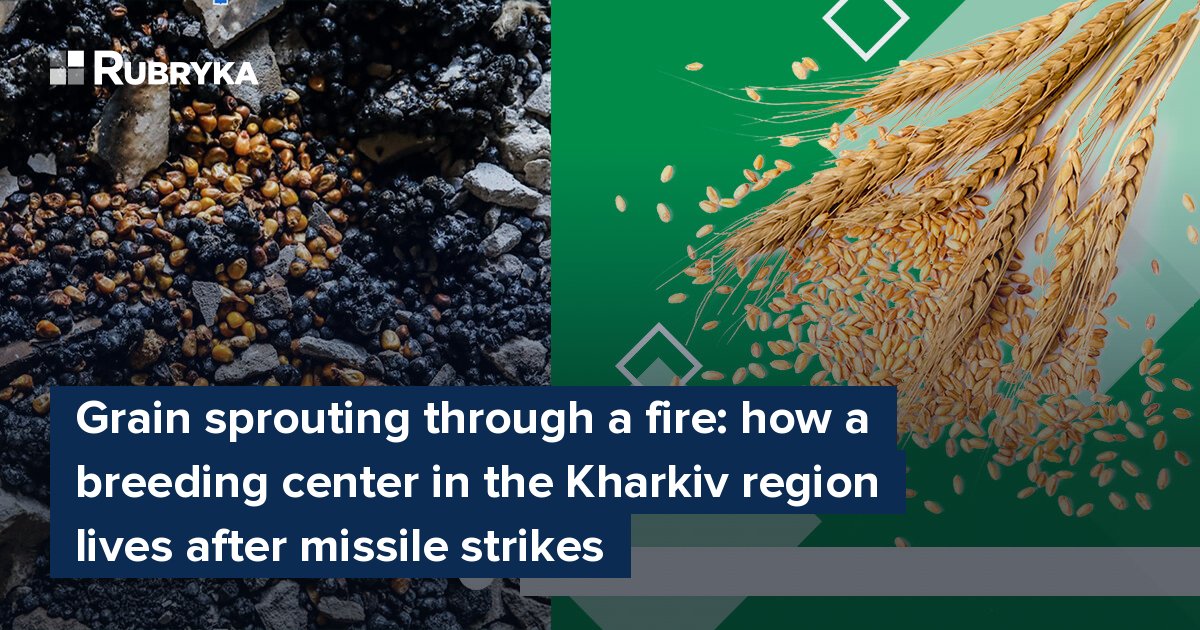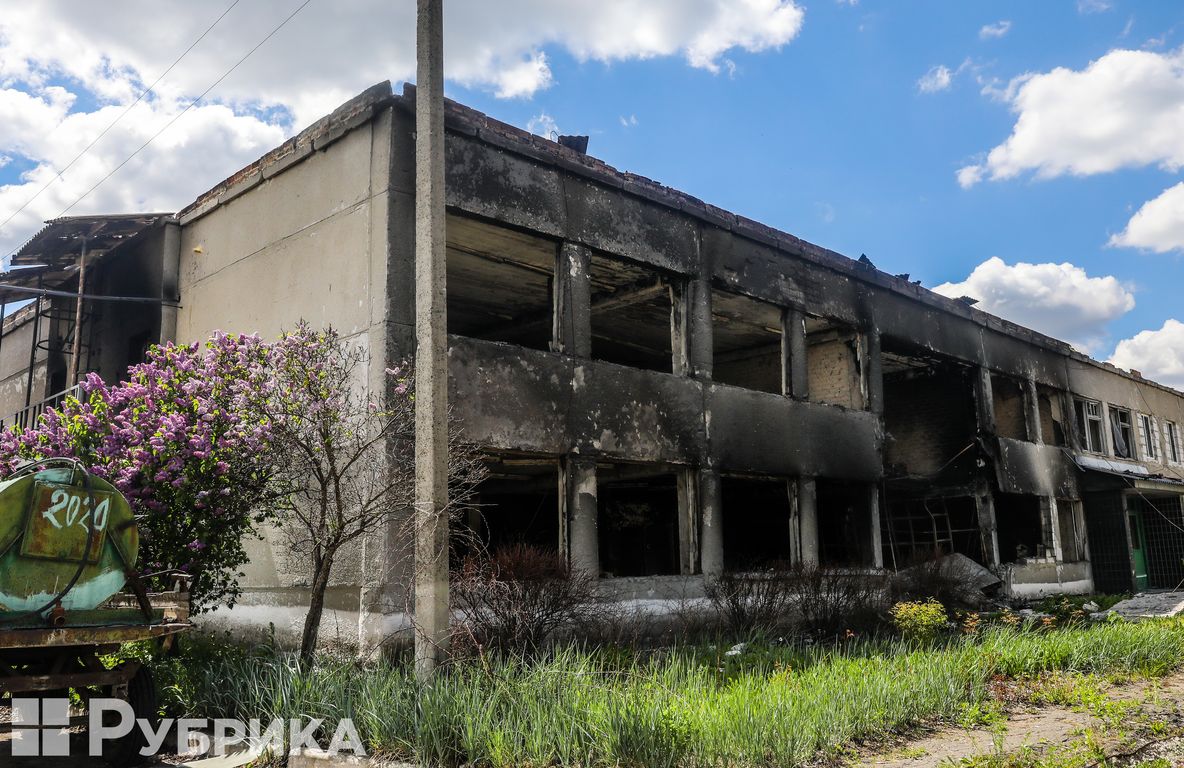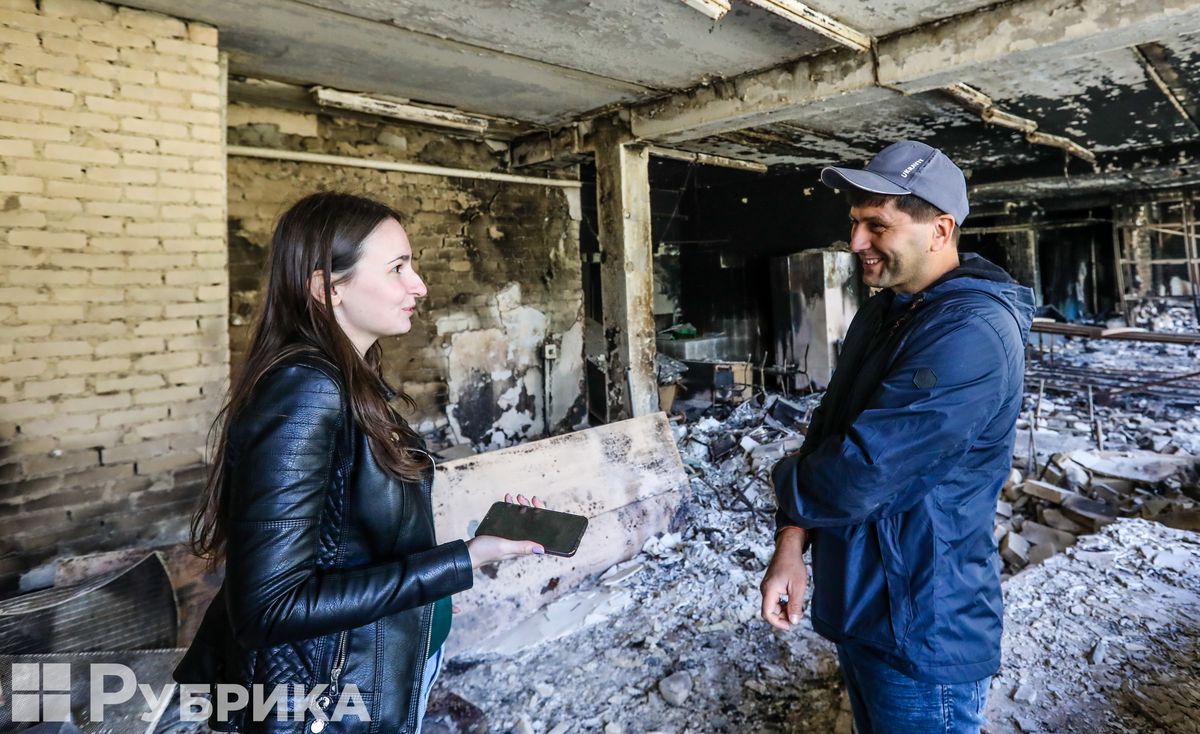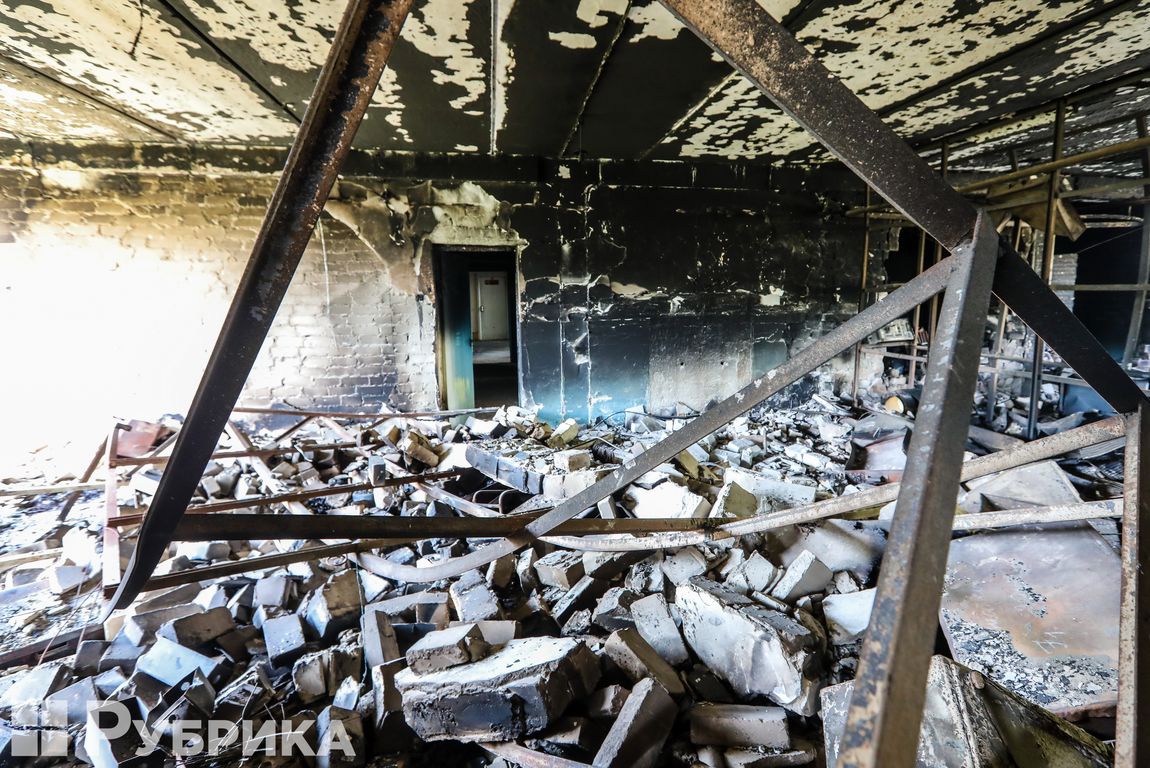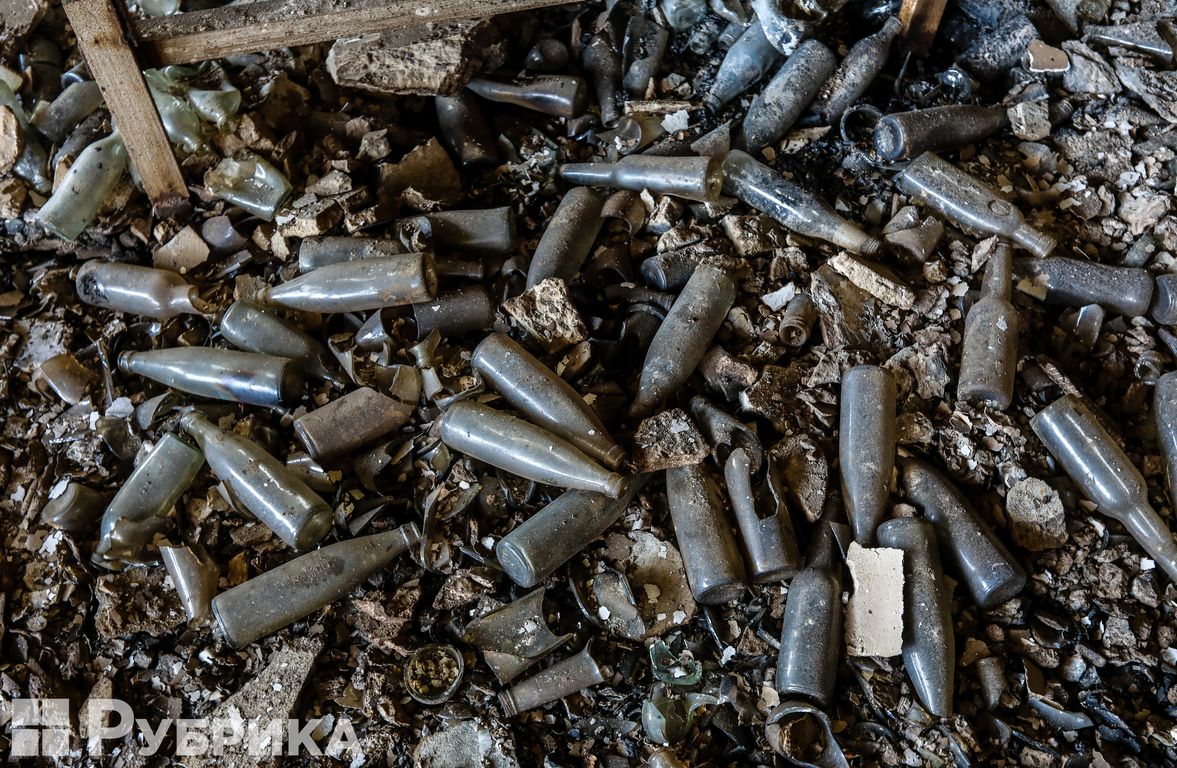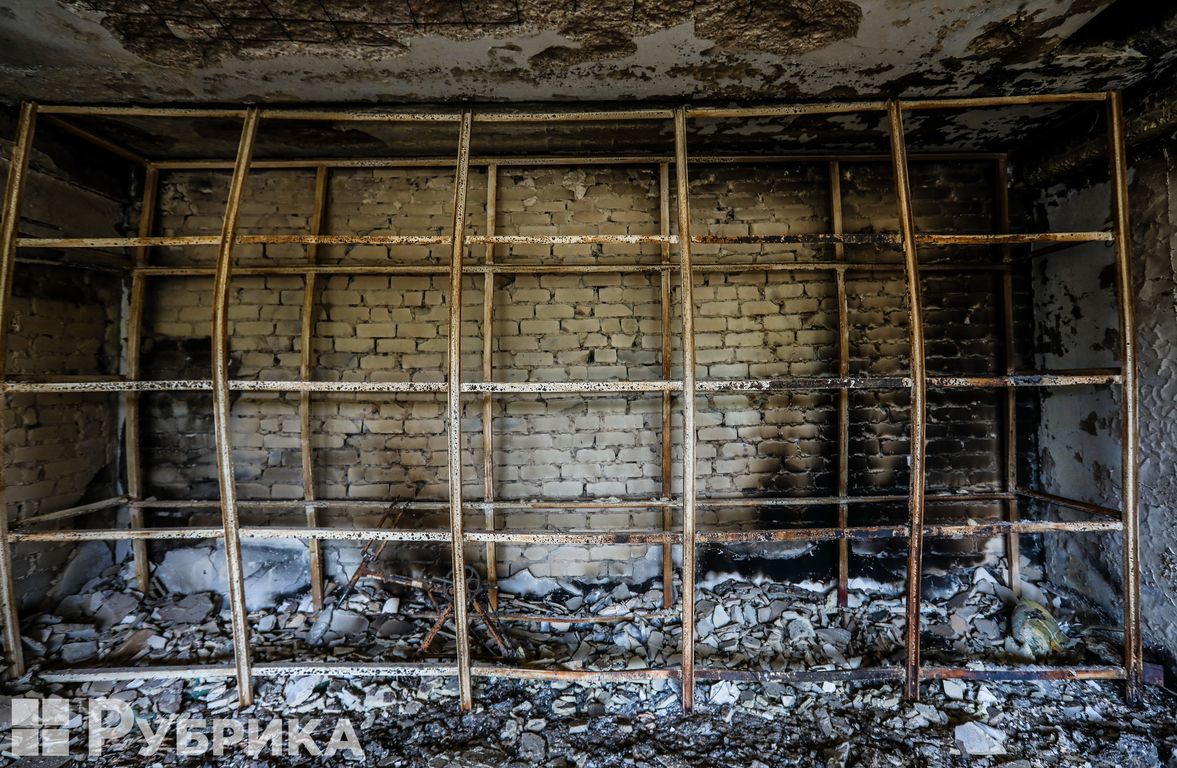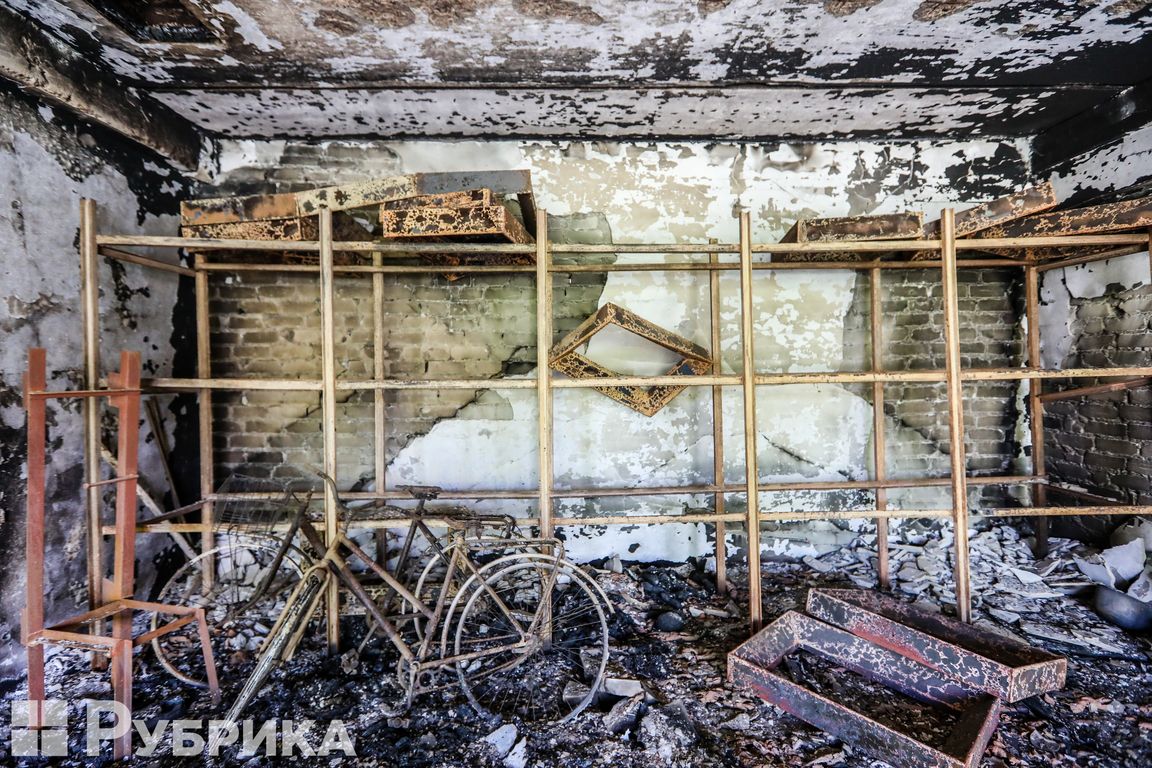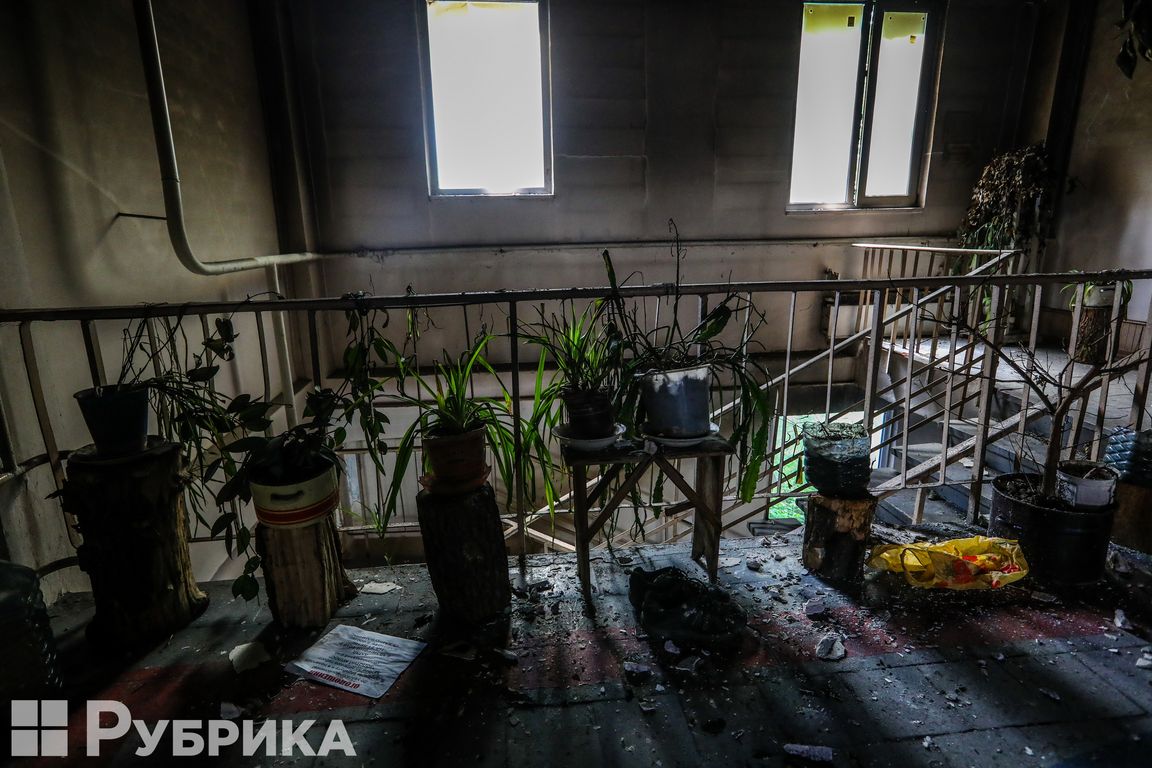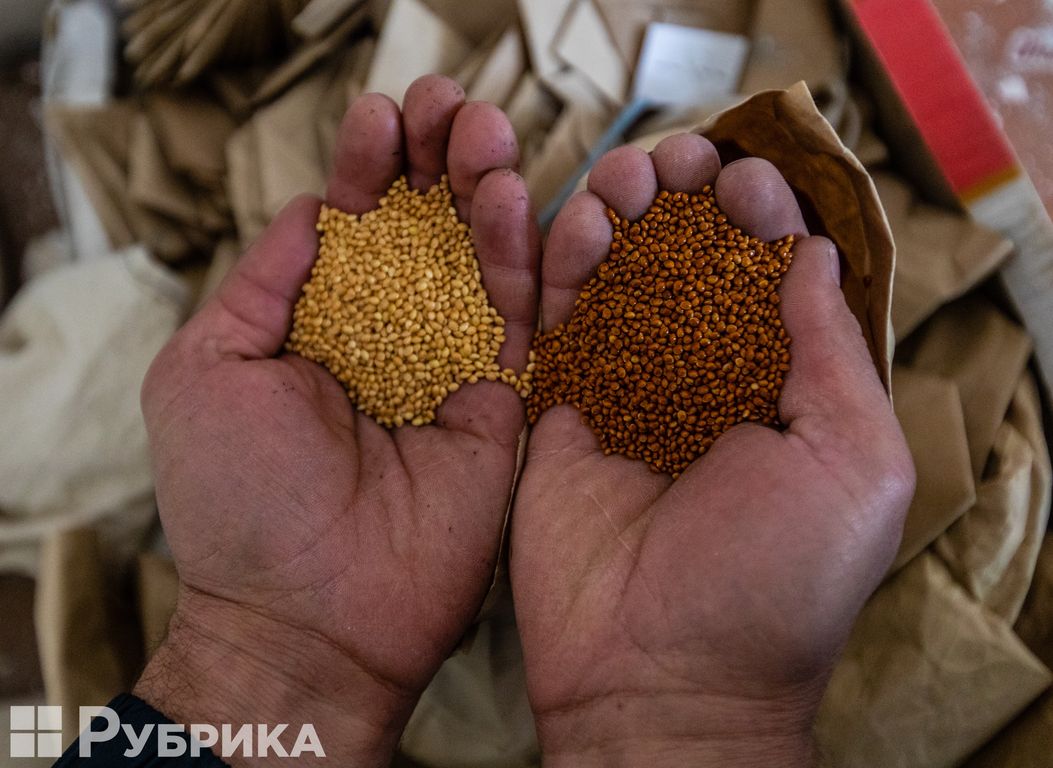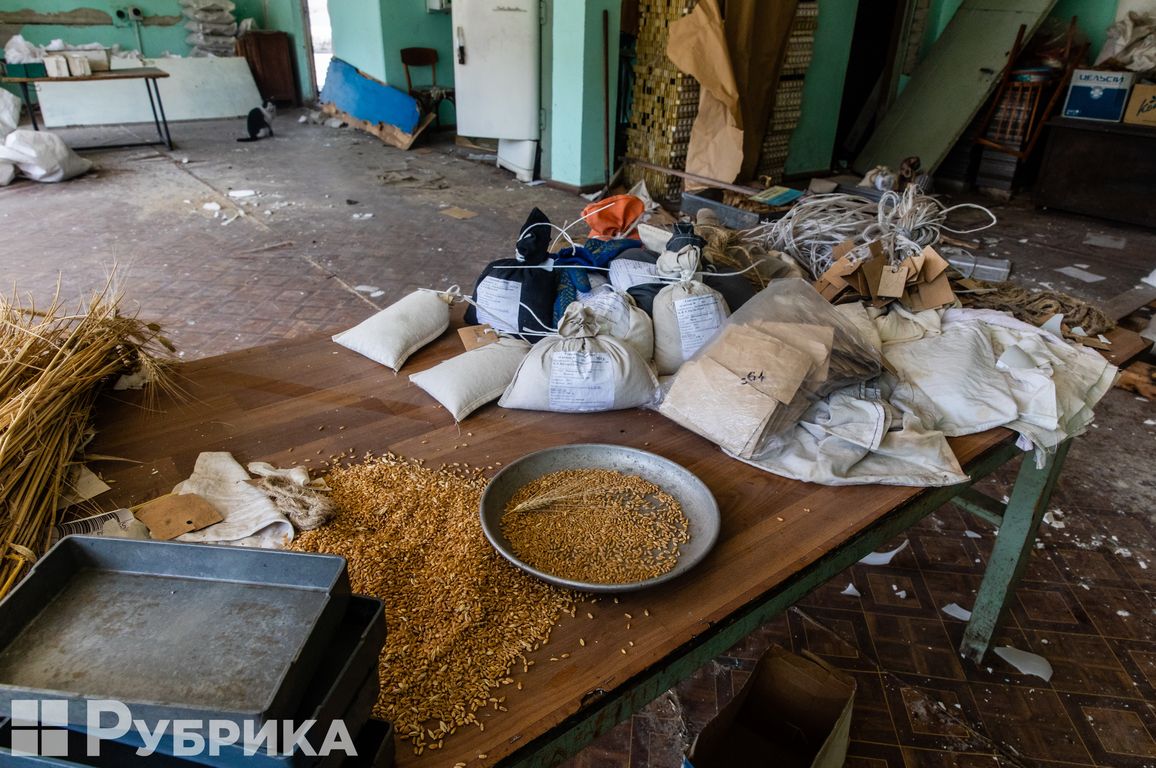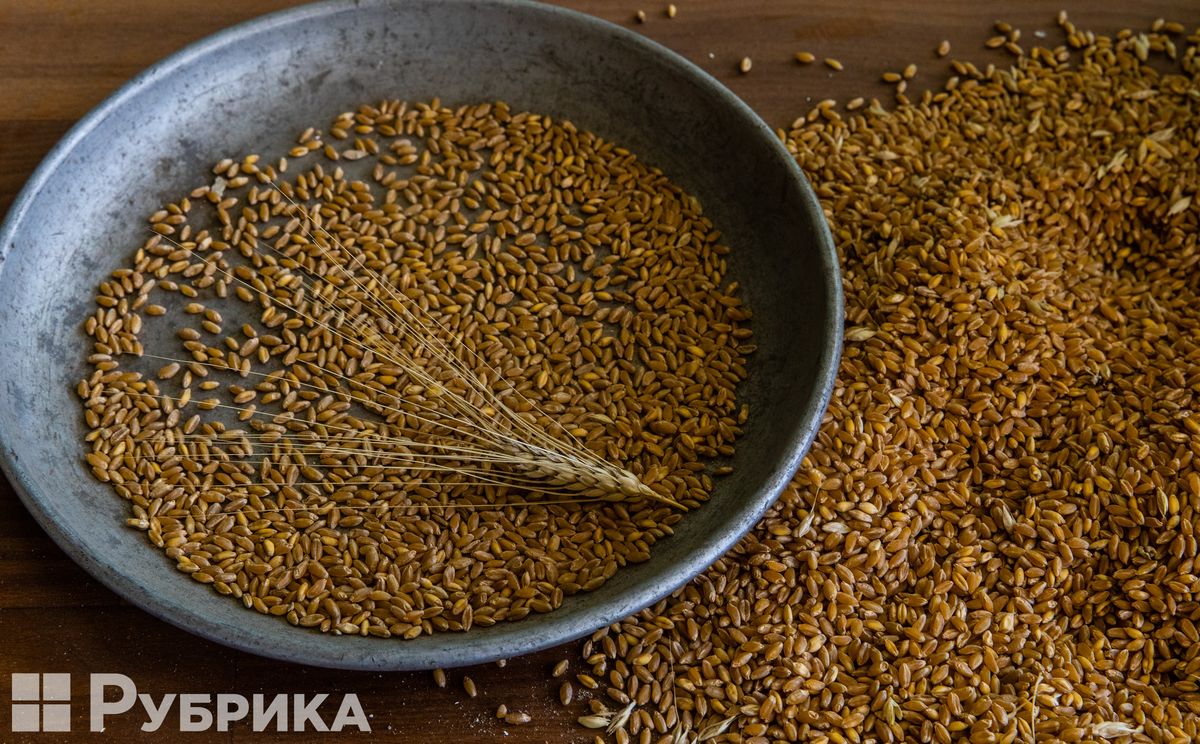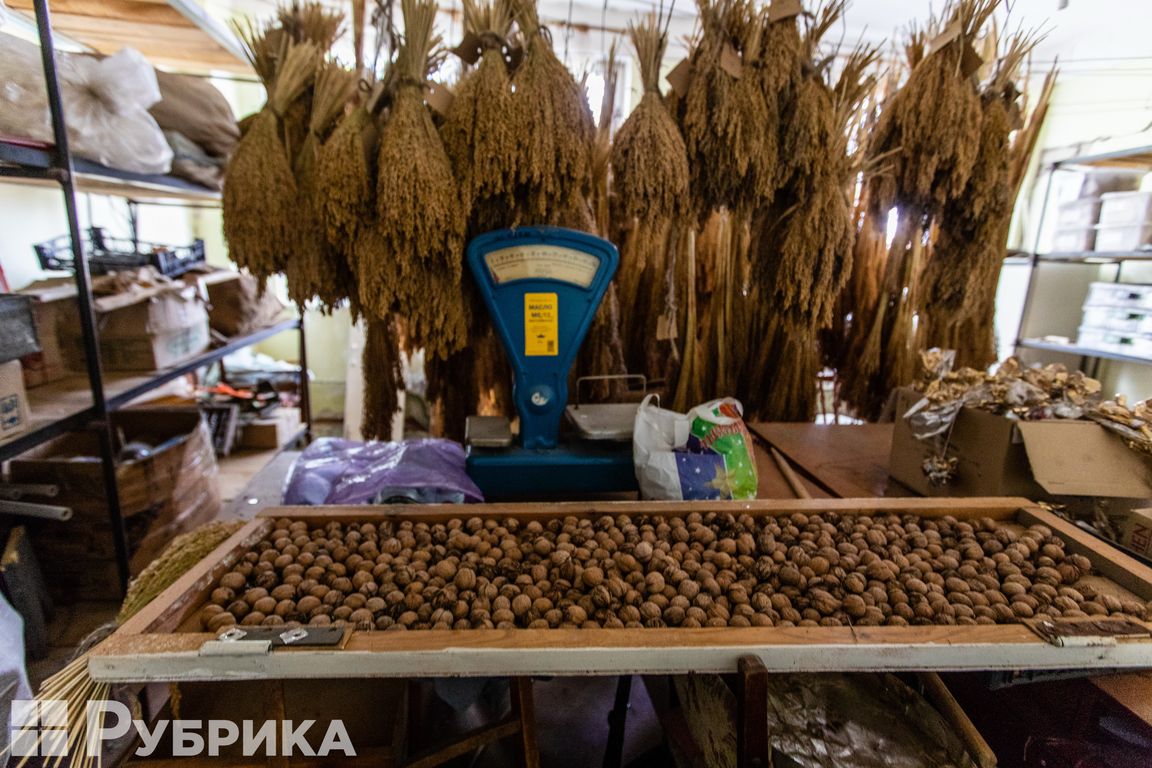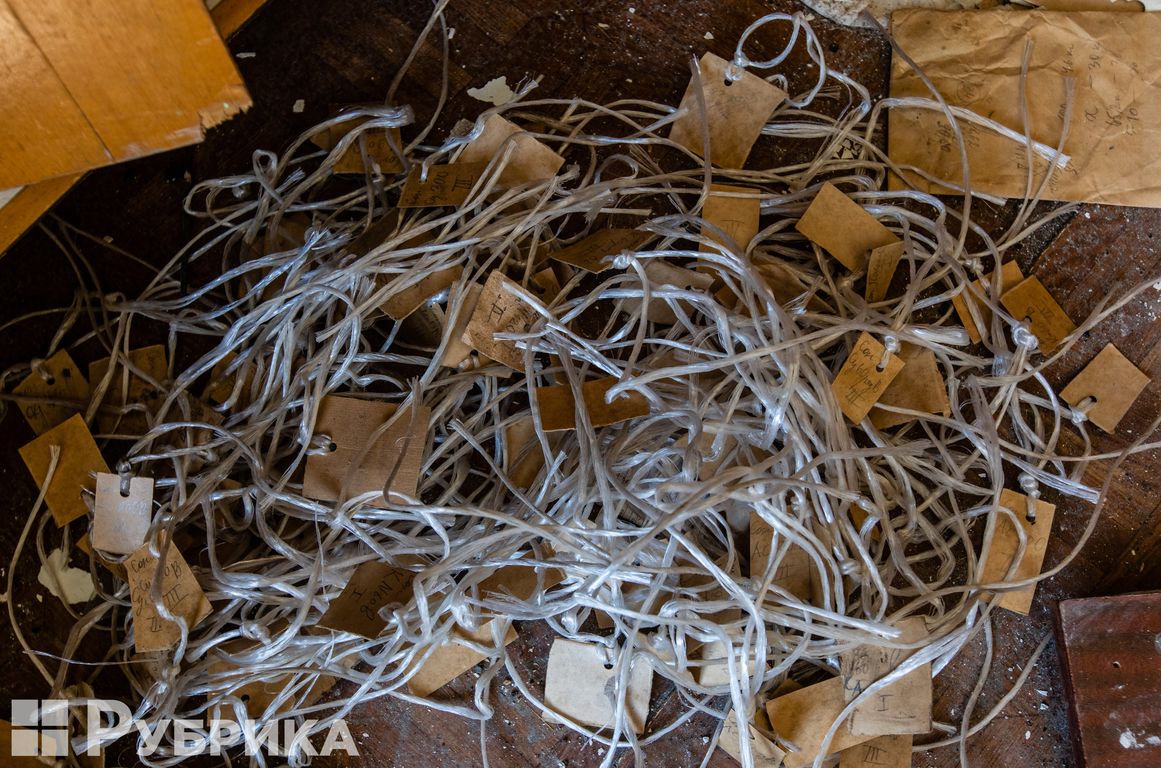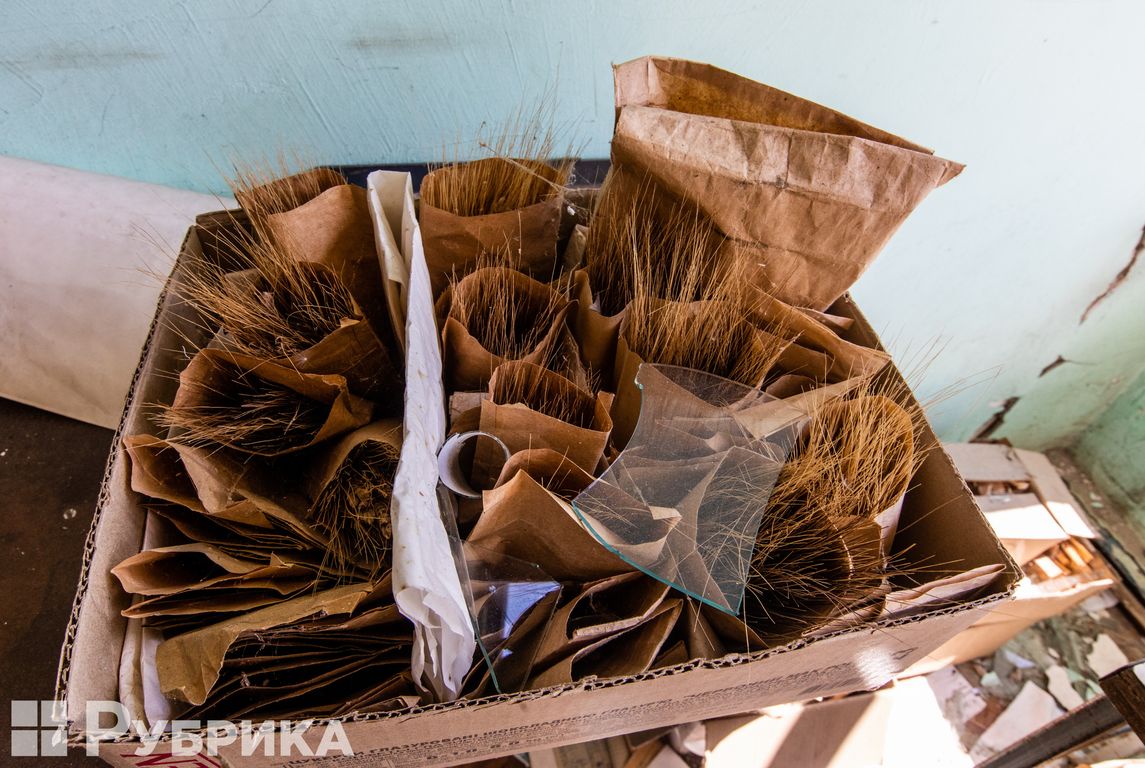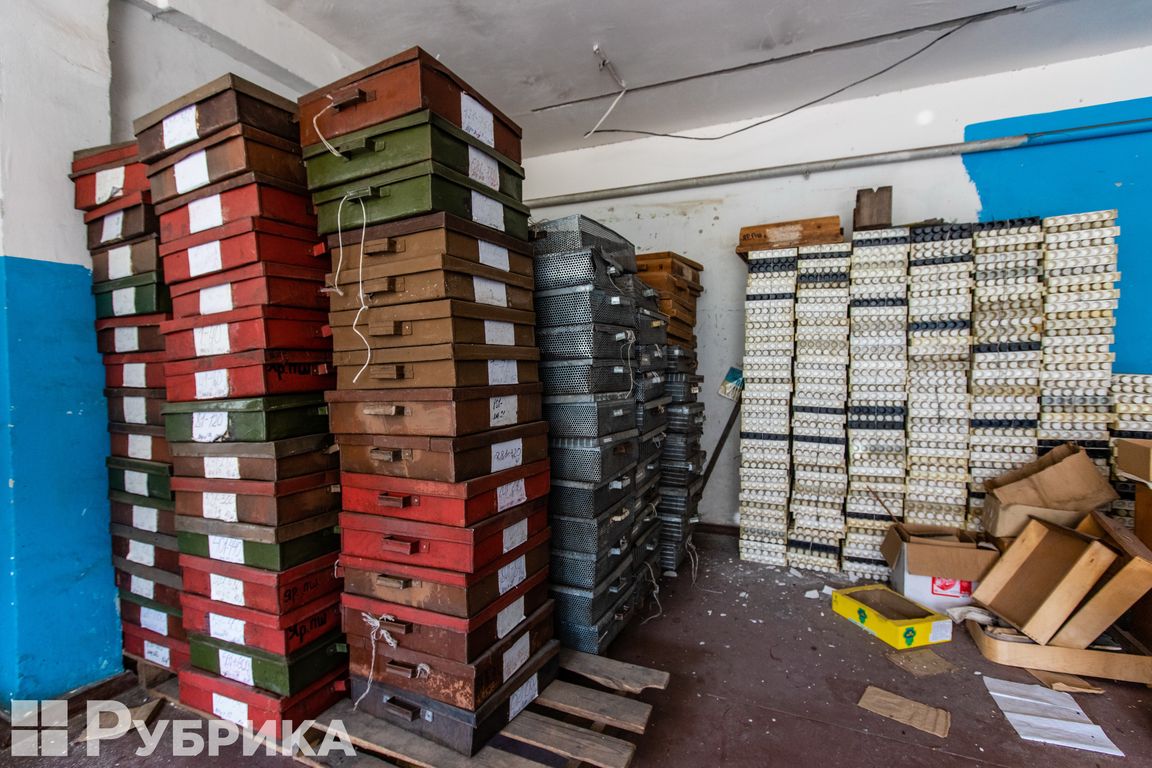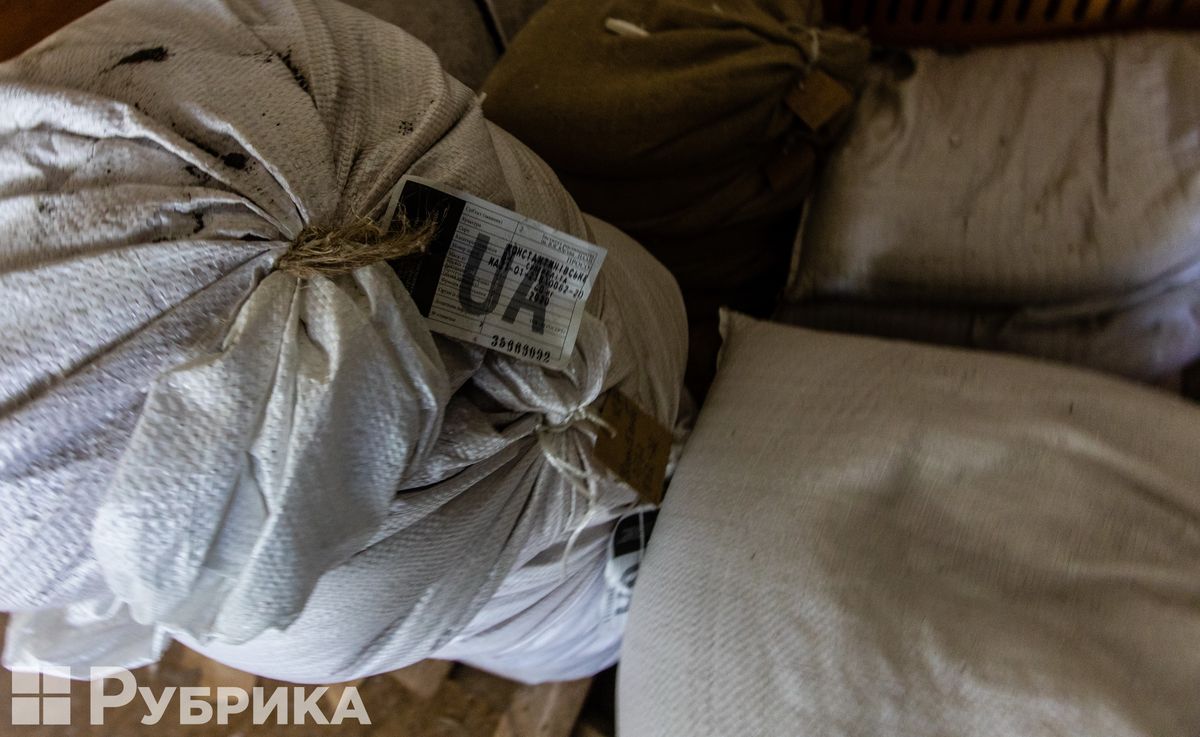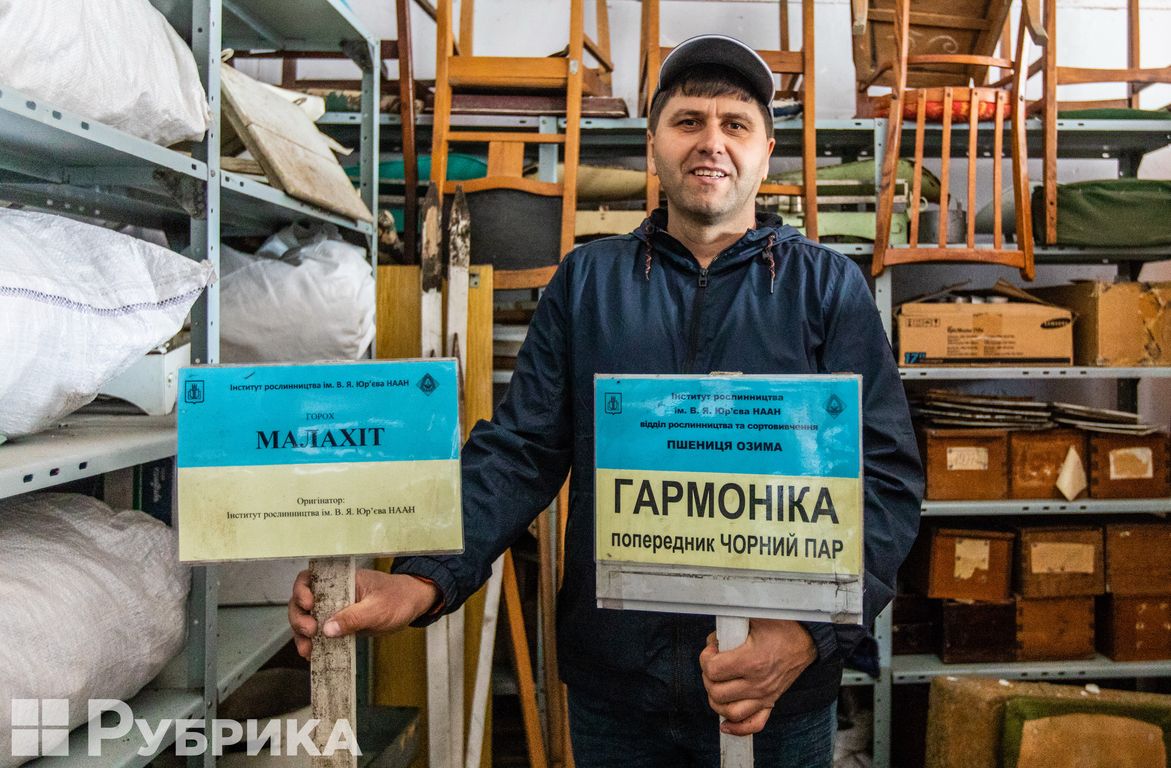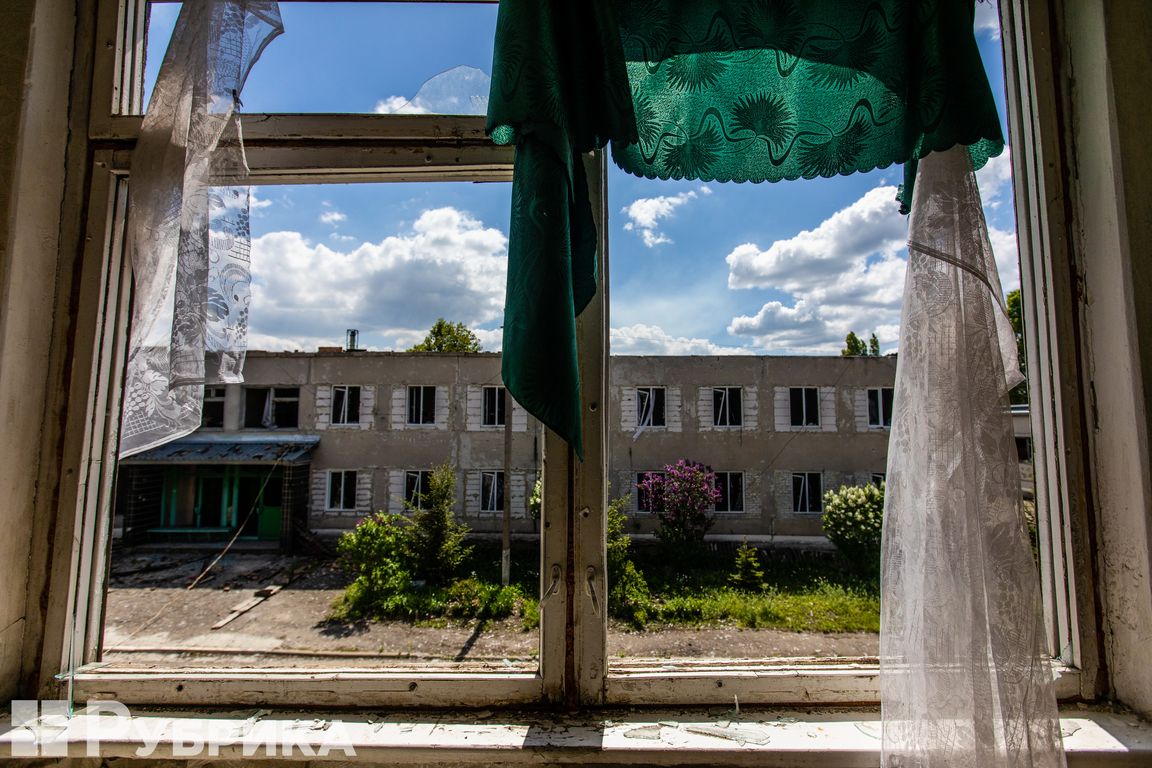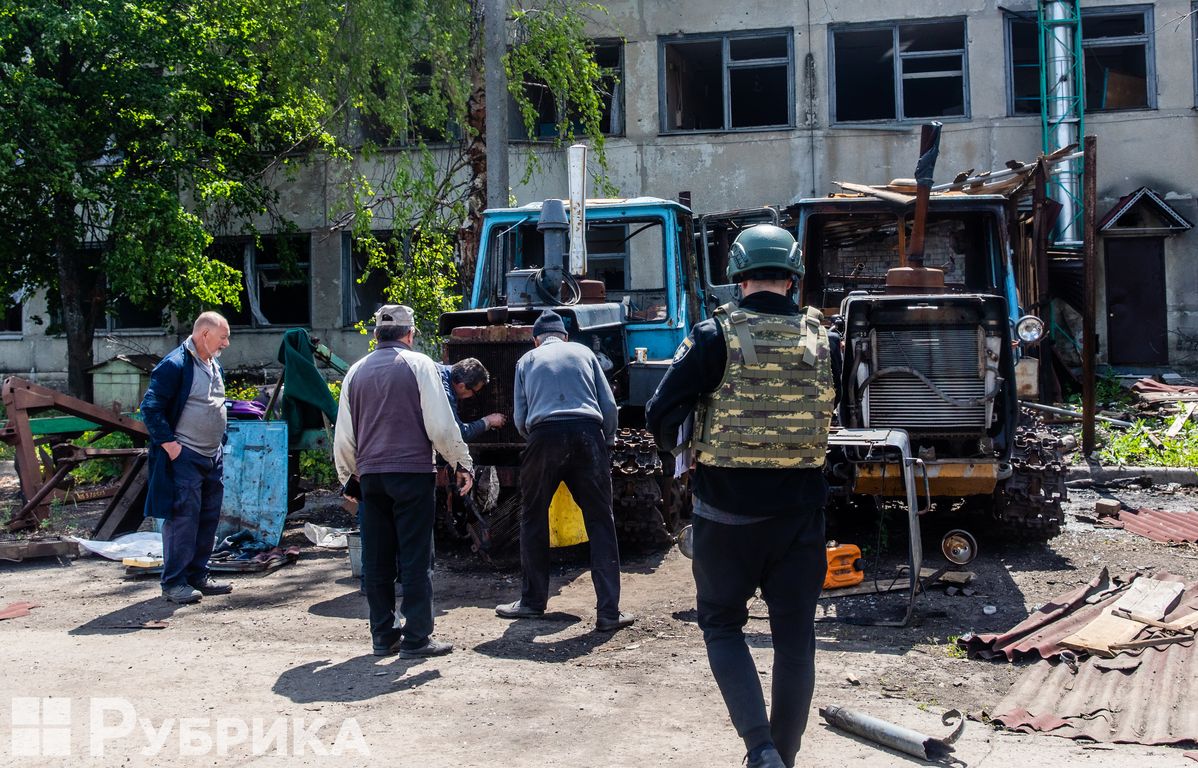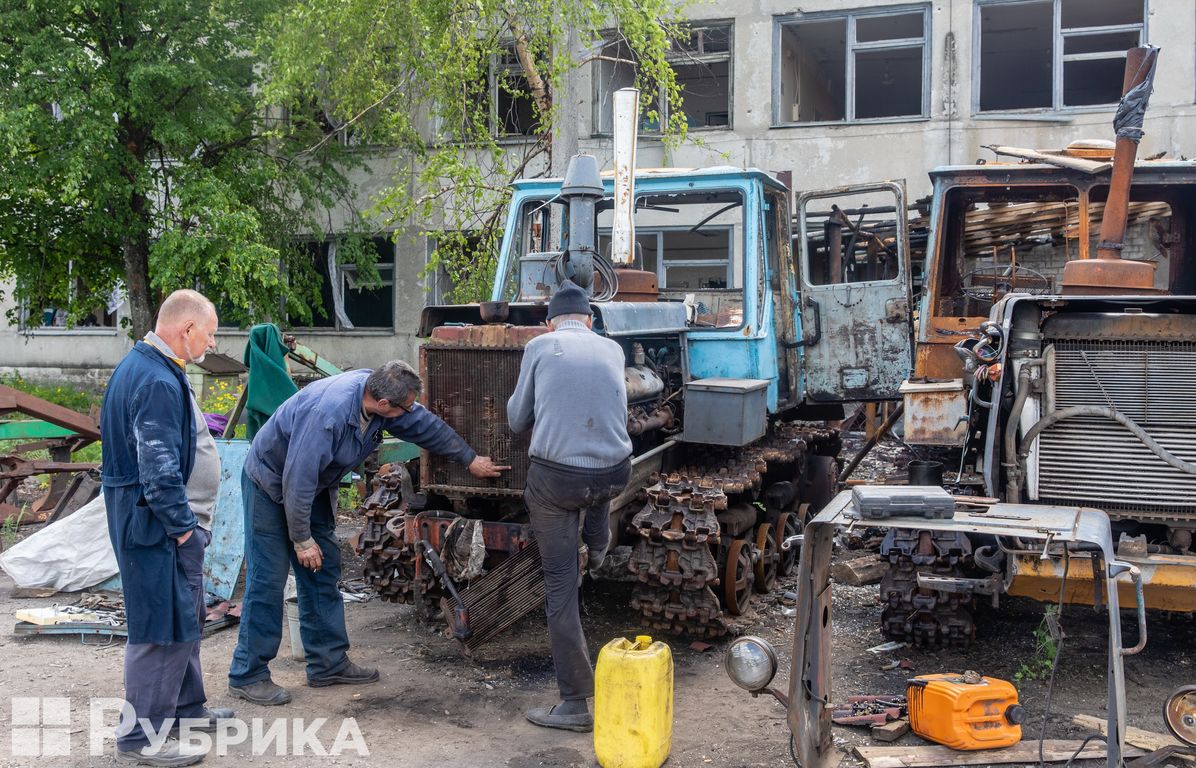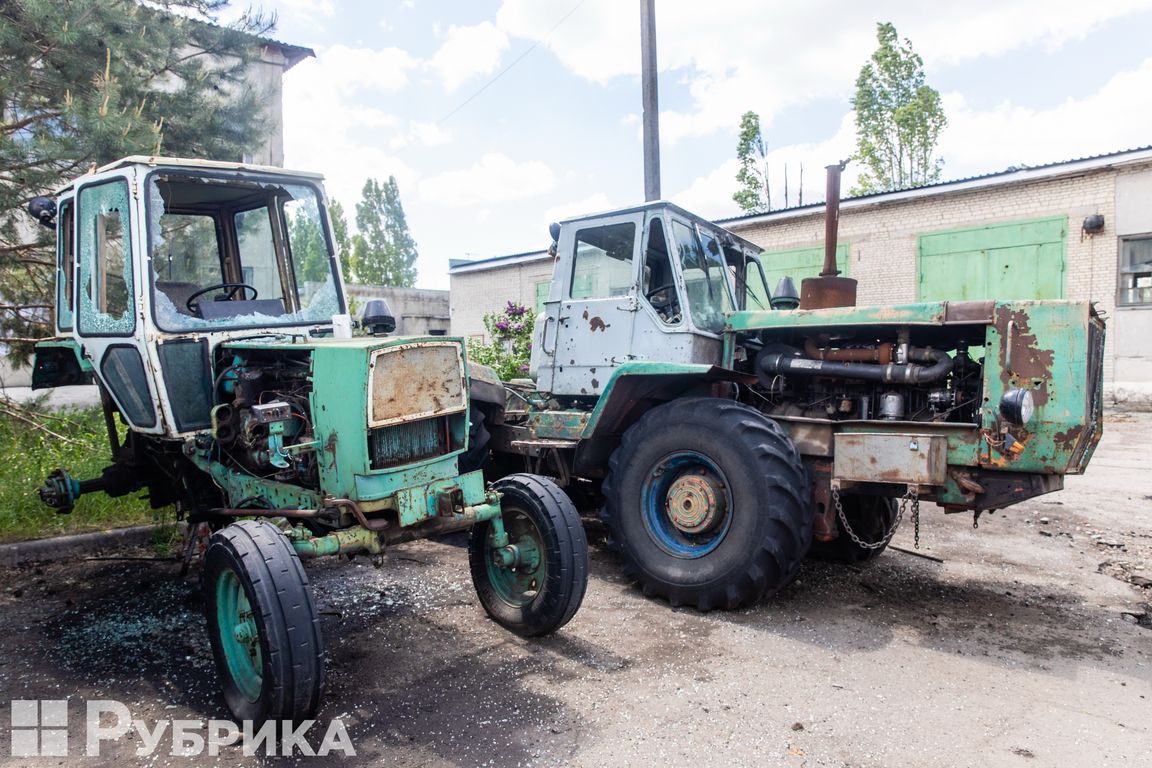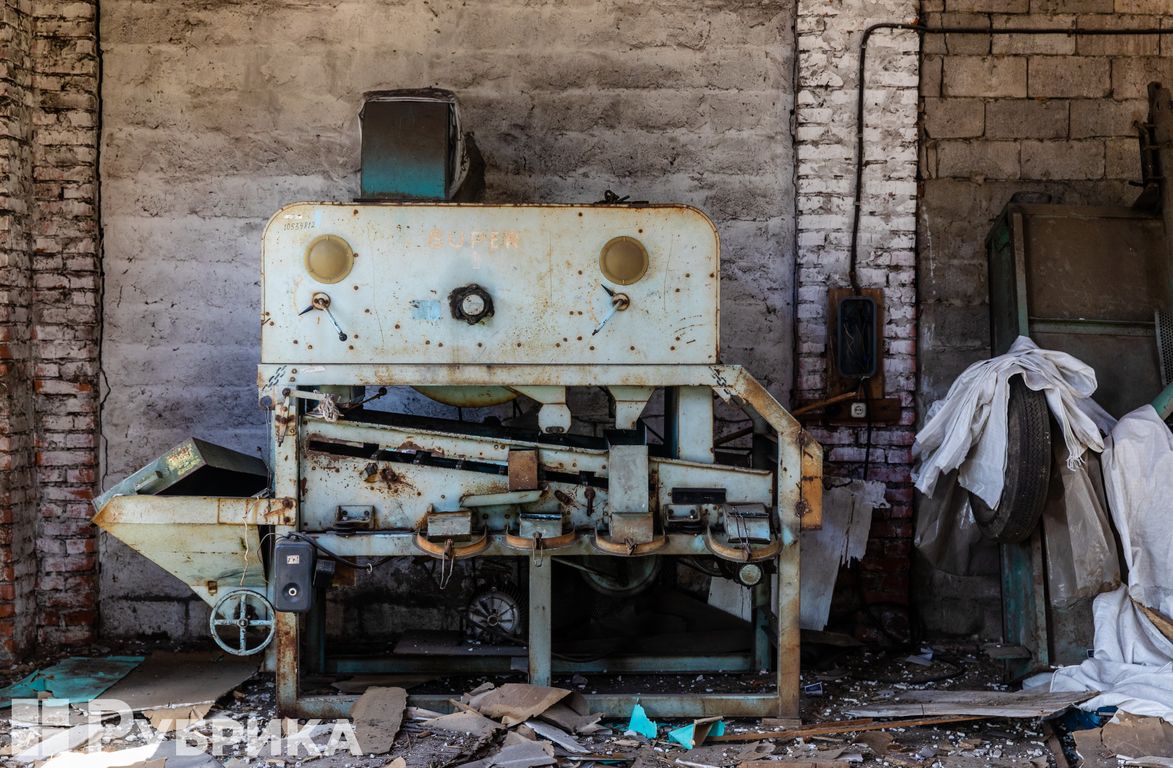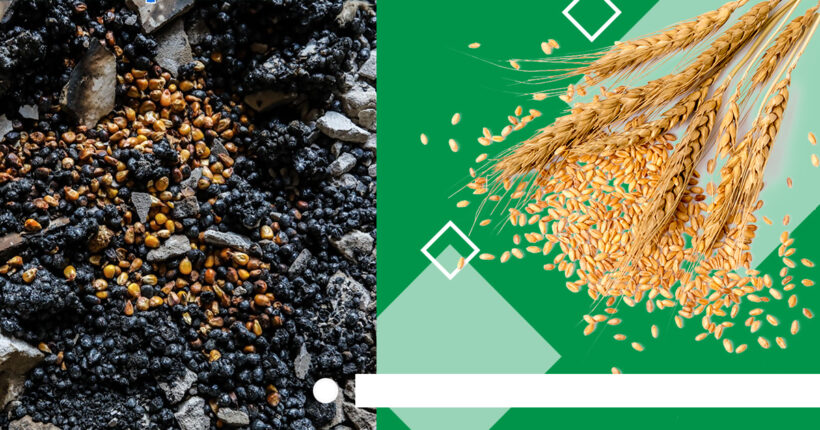
The Plant Production Institute named after Yuriev in the village of Elitne is one of the many wounds in the Kharkiv region. And it seems that it will bleed heavily and for a long time. "Rubryka" visited and asked if the destruction may lead to famine, what is necessary for recovery, and how the institution survives now.

"Breeding happens here"
The road to Elitne is between the fields. Fragments of shells appear from the earth blackened by fire. Green sprouts are breaking through the same ground but a little further. The military is everywhere. The documents in these places are examined thoroughly. And you have to be careful with what you are saying. Especially when it comes to giving advice on which way is safer to travel.
This part of the Kharkiv region is just getting over the occupation. There are not enough miners, and the demining process is ongoing, and it will continue for a long time. Checkpoints block unverified directions. Verified ones are full of debris and tank traces.
A thick smell of fire hangs over the breeding center. Serhiy Avramenko, a senior researcher at the institute, takes us inside.
"Here we were sorting the samples, and here we prepared the soil. And here they killed a muscovite," as we pass a large bright red puddle, "I'm kidding, we didn't kill anyone. Although, you know, you look at it all and realize that you don't really mind," says the scientist, breaking through the debris of the former laboratory.
Kharkiv Institute of Plant Breeding is the largest breeding institution in Ukraine. It is responsible for breeding the new varieties of different crops, preparing seeds for sowing, improving the cultivation methods, and caring for the fields to be fertile. There is also a bank of plant genetic resources on the basis of the institute.
"There are many breeding institutions in Ukraine, but this is the largest in terms of the number of crops we breed here. We have 15 crops here — wheat, rye, peas, barley, corn, sunflower, and almost all grown crops. Breeding happens here. We don't have only buckwheat, oats, and rapeseed," says Serhiy.
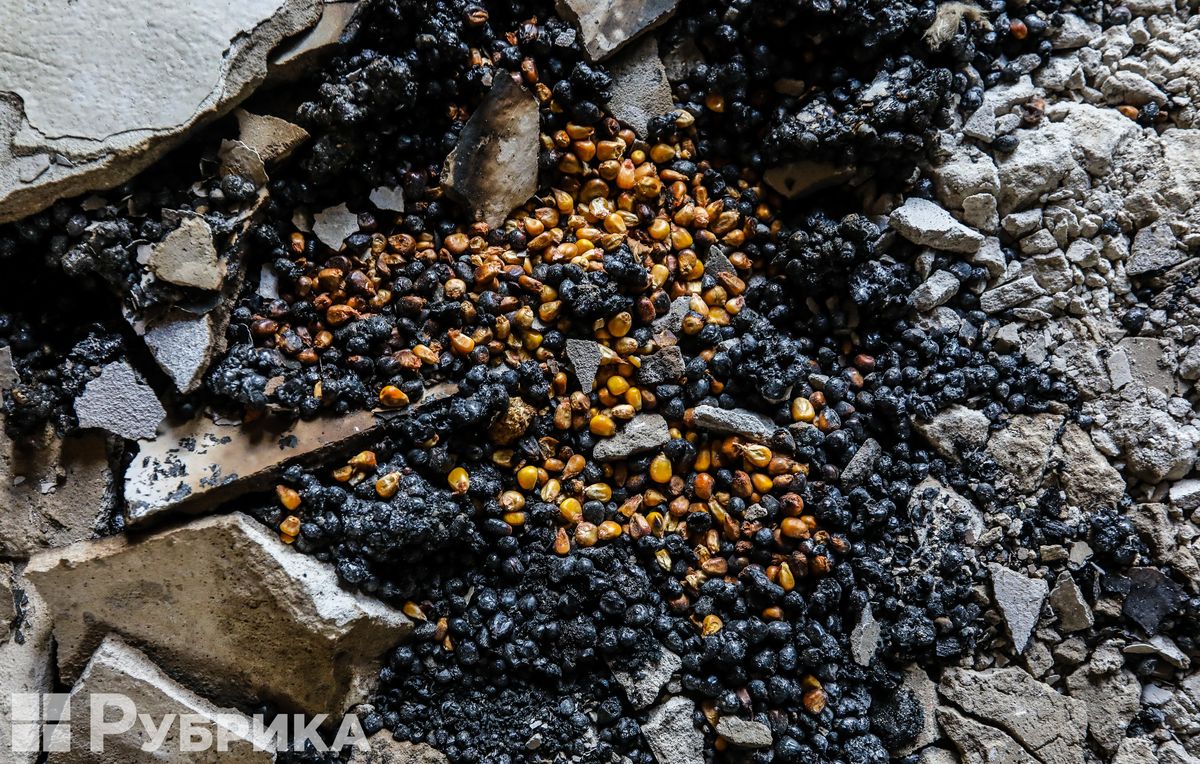
He is interrupted by a missile strike somewhere nearby.
"Even if one seed survives, the variety can be restored"
In mid-May, the Ukrainian media reported that the world's largest genetic bank had been completely destroyed, that an entire variety had been lost, and that we were now in danger of famine. Serhiy sighs heavily, explaining that the laboratory and the part of the spring crops grain to be sown this year have been damaged. But this does not mean that we have nothing left.
In addition, the building of the genetic bank was not damaged, only the breeding center. Although, this adds a lot of difficulties.
"You can make a new sensation — the collection of the genetic bank has been saved. Almost all of it was. It is the same that happened with those guys from Zmiiny island. When everyone thought they were dead, it turned out that they were alive. It is the same with the gene bank now," the man laughs.
We go to another room. Stepping over the fragments of walls and equipment, the scientist continues explaining — there is a genetic bank storing samples of crops. Only the part to be sown is brought here, to the breeding center, to be cultivated and prepared for sowing.
"Winter crops were sown – wheat, rye… But spring crops from this gene bank were here, preparing for sowing. There are also all the seeds from breeding laboratories apart from the bank collection of gene resources. The local staff saved it — workers managed to duplicate all these seeds and take some of them away.
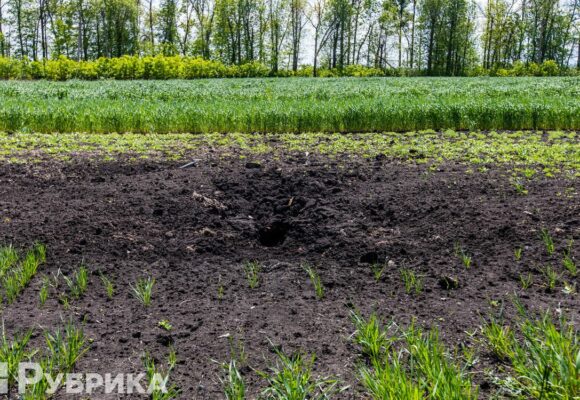
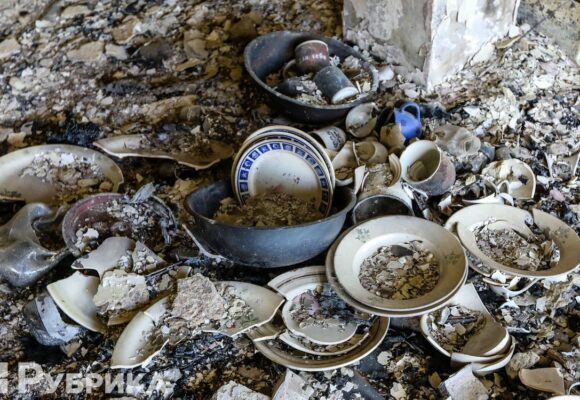
It is clear that there were more of it here. Even if one seed survives, the variety can be restored. It just takes a year or two longer.
And plus, the huge loss for the institute is the breeding laboratories. We created hybrid varieties of all these main crops and transferred the seeds of the highest reproductive qualities to seed farms. We reproduced it there and sold it to farmers. Now this chain is broken. We have not been able to sow any seeds from spring crops this year. The peas, barley, corn, sunflower, soybeans…" Serhiy explains.
It is unknown when and how many times the russian military hit the breeding center. It is unknown how long the fire lasted. Serhiy emphasizes that the duplication of grain was already under fire. Later, employees of the institute could not come here, because Elitne was under occupation. And as soon as the scientist could get here, he filmed the destruction and posted it on the Internet.
Today the video is blocked. It is what Serhiy himself decided to do so that journalists would no longer write that everything was destroyed. Instead, on the day of our visit, another film crew arrives, to which Serhiy Avramenko explains everything. But for now, we are making our way to the relatively integral part of the breeding center.
"I always have a sickle ready"
"It is a spring wheat breeding laboratory, here we have…had employees. Here, too, spring wheat was being prepared for sowing. These are samples, they are selective, and everything is numbered. It was hand-selected and sorted here."
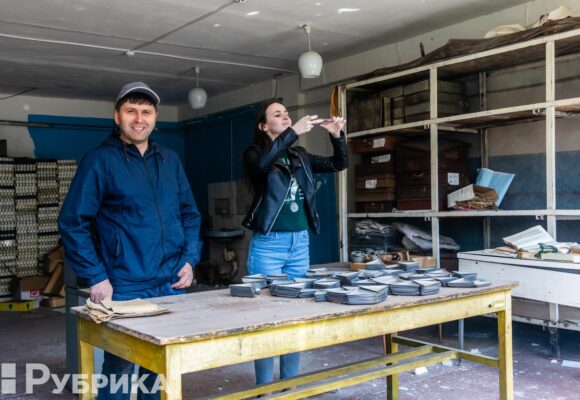
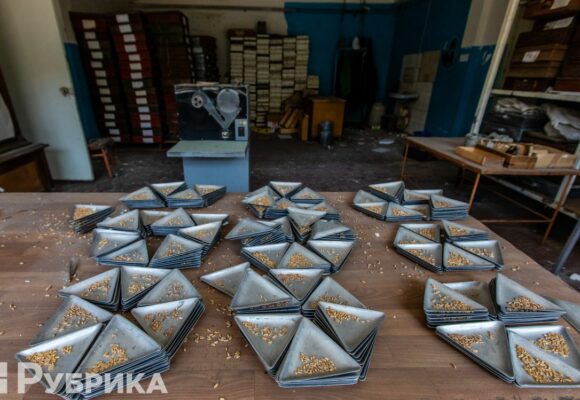
Through the missing windows, you can see a cat trying to get the photographer's attention outside.
— "Is it yours?"
— We are ready to present it! We had dogs and cats here, that we fed. Now there are only three left. Our survivors," the man smiles sadly.
The scientist shows the first variety of spelt in Ukraine, a variety that was grown in Trypillia, and the institute staff restored. Numerous sheaves are hanging directly from the ceiling. Yellow and red-grain millet, which, according to the expert, is not too late to sow, but there is no equipment and, in fact, no territory.
"The fields are mined. The sappers partially demined them, but now they have been transferred to another place. And we can't send people to the fields to sacrifice themselves and demine everything. Now the wheat is growing, overgrown with weeds, and pests and diseases will soon begin. We need to get to it and spray it, but there are mines," explains Serhiy Avramenko.
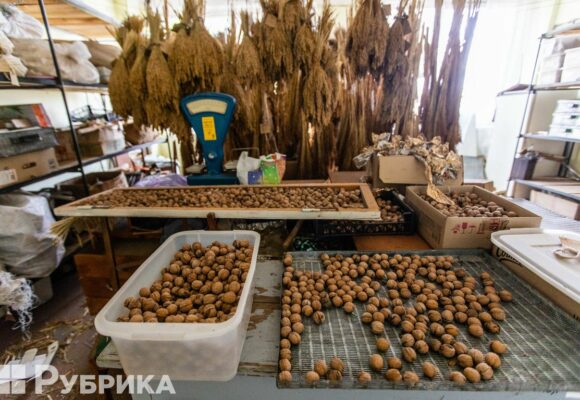
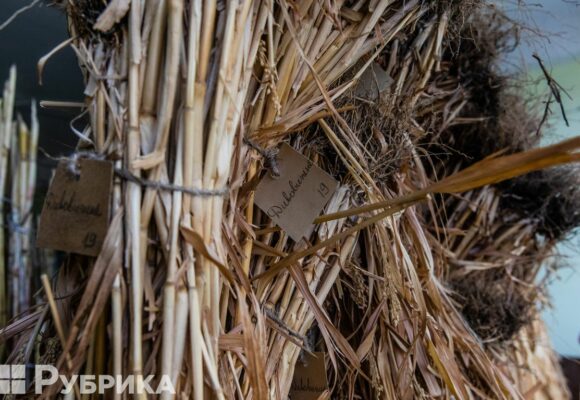
We avoid a bunch of small cardboard cards, which the institute's staff cut by hand to mark the samples, the surviving components of the burnt equipment, and tables with tiny seed bags. Serhiy notes that each culture has its laboratory. Spring wheat breeding laboratory was famous exclusively for its female team, whose representatives worked rain or shine, as our guide recalls.
Some of them are now abroad, as well as many employees of other institution laboratories. Many are already lucky enough to find a job in the profession, and whether they will return home is now a big question. How Ukraine will deal with a large-scale leak of specialists is an even bigger question.
The scientist shows the signs with the names of the crops to be displayed in the field.
"We have decided to make these signs patriotic this year. It is specially glued from two parts. One part is printed on blue paper, another – on yellow, then they are glued, laminated, and displayed along the roads. Here is the road to Belgorod, and we had to do the signs in red and black," the man jokes.
As we approach Serhiy's office, he solemnly announces, "My apartment!" Everything is overturned, the windows are broken, and there is a sickle on the table. The scientist nods at it and says that perhaps the biggest problem now is the damaged equipment. Fields cannot be cultivated without it. At least on the scale that the institute takes care of.
"I always have a sickle ready. But only a small area can be processed with a sickle. And again, the fields are mined…" reminds the farmer.
"The guys are assembling one tractor from two burned ones"
"Combines, seeders, plows, cultivators, high-precision and expensive equipment. We actually don't have any from now on. Not all combines are suitable for us. Neither are seeders — ours have to be the breeding ones. And all this equipment in the laboratories — the scales and drying cabinets — russians destroyed everything.
The guys assemble one tractor from two burned ones. And the rest…we have almost nothing left. One little tractor survived somewhere… People asked how it threatens Ukraine and how bad it is. It is really bad because the chain is broken. This year, the people were able to sow, and everything was fine. We have the seeds from last year for the following year, but they are very few. And this year, we will not be able to get a spring crop," says Serhiy.
On the street, we pass mechanics who are really assembling the surviving parts from two tractors. One of them cheerfully asks: "How do you like the gifts from our mouse brothers?"
Serhiy Avramenko says that breeders are now buying pesticides at their own expense to treat and save at least some crops from weeds and pests. Some processing equipment could be rented, but another problem is the lack of fuel. After all, the employees of the institute have their hands tied.
"We have to talk about this. Now the emphasis is on the fact that we cannot export grain. Well, there is enough for us. Unfortunately, some were stolen by the russians. Exports through Europe and beyond are being figured out. But this is last year's grain that we are selling. And this year, farmers have sown about 70% less area, so there will be less harvest.
But the question is for next year. To sow something, you need to get seeds somewhere. The farmers must take the seeds from these establishments. And our institution is in such a state. It is clear that everything will be blocked. There is an institute from Dnipro, where there is some corn. We can get wheat in Odesa. Others may be taken somewhere else… But some varieties only we had here. Which exactly — I can not comment now," says the scientist.

The man also says that some years, the plant-growing institute received funding for only 25% of its needs. Accordingly, people were fired by dozens. Because of the war, many specialists left the Kharkiv region, and it is unknown whether they will return. And they are the key to any way out of this situation.
We can't speak for sure about the losses at the institute now. Serhiy explains that it is extremely difficult to calculate them, as a significant part of the necessary equipment is custom-made. If the device, which was ordered ten years ago, is damaged, today its price will be completely different.
"What is also very difficult to assess are selection samples. It is like a picture. How do you rate it? It is an asset. So are the seeds. Imagine seed samples that breeders have been creating for 10-15 years. The whole lab worked for years to create that variety. They created only the first handful of the variety, but it got destroyed. And there may be two seeds left in stock. So they would multiply it in a year or two, and the results will be in five or seven years," the man concludes.
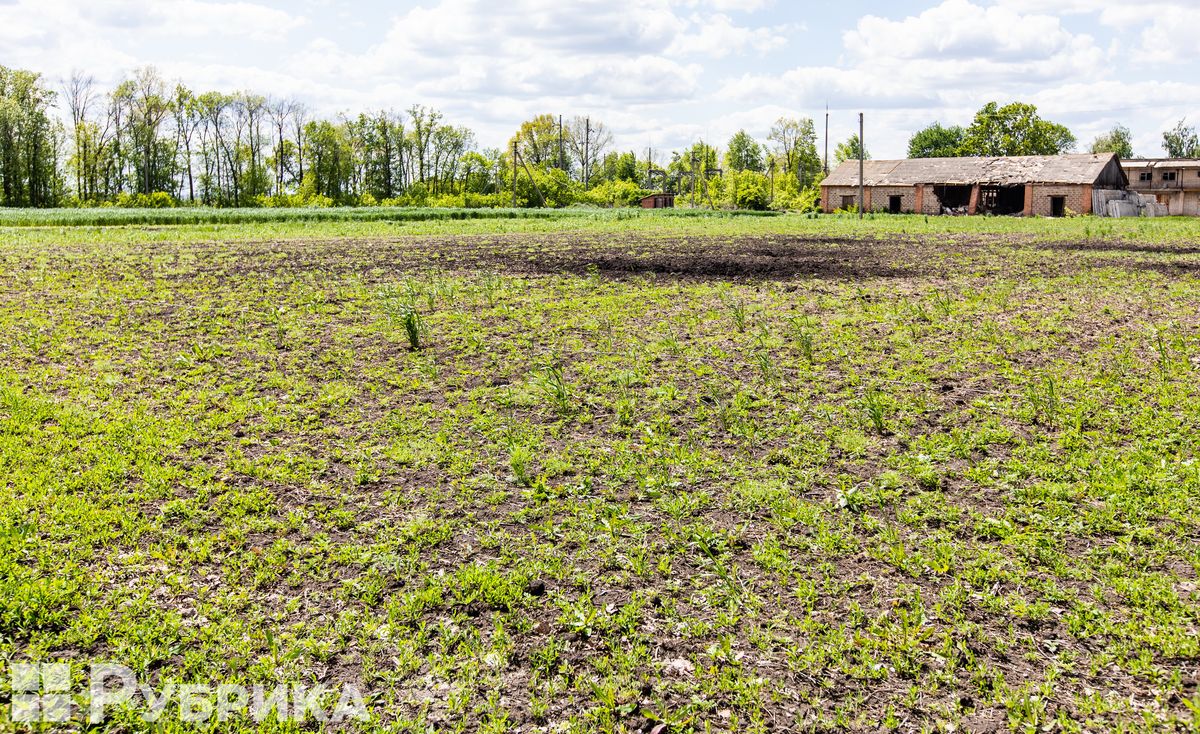
What is the solution?
"To get people back…"
When we ask what can be done with all this now, Serhiy thinks for a while and returns to the problem of specialists. He says that, for people to return, we need something to offer them. After all, it is people who will agree on the lease and manufacture the necessary equipment. It is the people who will continue the selection. It is people who will look for solutions. And there are none at the institute in the Kharkiv region. russians mercilessly shell it, and 30% of it is still under occupation.
What is the most urgent?
- Demining the fields must be the responsibility of the state. However, farmers can remind it of this need.
- The problem with damaged equipment will be temporarily solved by cooperation with other similar institutions and private farms that can rent their combines, tractors, and drills.
- Lost grain and seeds can be recovered even when there is only one seed left. It is only a matter of time, which, unfortunately, cannot be resolved now.
- Specialists, who can do this, need to be brought back to Ukraine from abroad with offers of better salaries and higher guarantees so as not to fall under another reduction. It is also necessary to train new specialists, which will require both state programs and local initiatives. After all, everyone can generate a solution. And today, it is felt more than ever.



